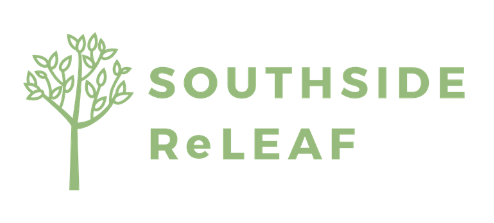What Drives Us
The evidence is clear. We’re experiencing a climate crisis that is disproportionately causing harm to frontline communities because of existing social inequities. For the city’s Southside, the root of this social vulnerability stems from a legacy of redlining, historic disinvestments, and discriminatory policies.
The adverse impacts of climate-related disasters will result in greater risk and loss of jobs, food security, housing, and health care. For families affected by the inequalities of wealth and lack of resources to meet basic needs, it is more difficult to bounce back after these events.
A Shorter Life Expectancy for Southside Residents
Right now, the life expectancy of Southside residents is up to 20 years shorter compared to other areas of the city. This is attributed to systemic racism, a higher concentration of poverty, exposure to environmental hazards, limited health food options, and inadequate access to quality health care.
In fact, the 2023 Asthma Capitals Report ranks Richmond as having the second most asthma-related deaths in the country. The report states, “Some populations are at higher risk for dying from asthma than others. The causes of higher asthma death rates are complex but must be addressed to save lives. The top 10 cities for asthma-related deaths must take action to prevent more tragedies.”
Poverty, substandard housing, poor air quality, pollution, and even living next to a highway are listed as causes of the development of asthma. Additionally, the cost of care and lack of transportation to see a doctor may influence a person’s ability to manage and receive treatment. These same factors also put people at the greatest risk of harm from the climate crisis.
Southside ReLeaf is focused on improving these social determinants of health through greening, community outreach and education, and advocacy. Together, we will improve health outcomes in the Southside so our communities can thrive.
How Did We Get Here?
A History of Redlining & Urban Renewal
In the 1930s, the government graded neighborhoods on a scale from “hazardous” to “best,” based in large part on the racial makeup of residents. Richmond’s neighborhoods with Black residents were marked in red—or redlined—as risky investments for home loans. Many formerly redlined neighborhoods exist in South Richmond.
Although this practice has been outlawed, the legacy of redlining and subsequently urban renewal—the clearance of blighted properties that made way for today’s highways and large-scale projects—continue to have a lasting effect in Southside communities. A concerted effort must be made to rectify years of economic, cultural and environmental damage done to our communities.
Urban Heat Islands
Extreme heat is the greatest weather-related cause of death in the U.S. and will only increase as we experience more heat waves due to climate change. It’s no coincidence much of the Southside has the hottest temperatures in the city. Our neighbors are most vulnerable to Urban Heat Islands (UHIs) due to a high percentage of paved surfaces that absorb and radiate heat, leading to a high rate of heat-related emergency-room visits. UHIs exacerbate existing health disparities Southside residents experience due to limited financial resources, services, infrastructure and even green spaces. The lack of parks, gardens, tree canopy and maintained green spaces has reduced the quality of life and life expectancy of residents.
The Current Landscape
Urban Flooding
Southside experiences severe flooding due to outdated stormwater systems, a lack of green spaces and wetter seasons due to climate change. In 2018, the National Climate Assessment estimates that the intensity of rain events have increased by 30%. Heavier rainfalls in a short amount of time overwhelms the system and causes flash flooding. Unfortunately, many residents are paying the price with streets that become inaccessible after heavy rainfall and yards that are waterlogged for days.



